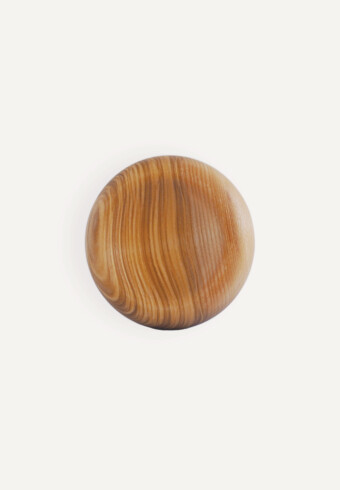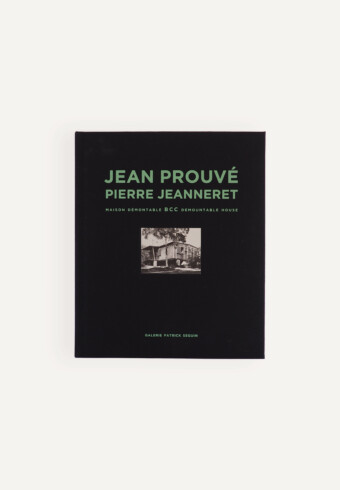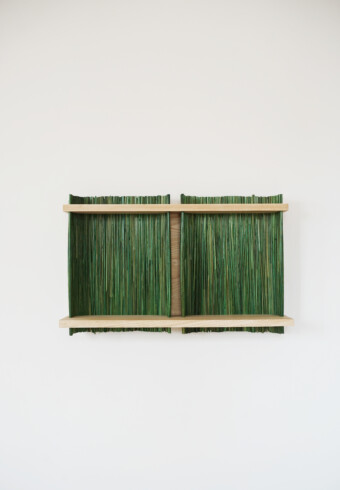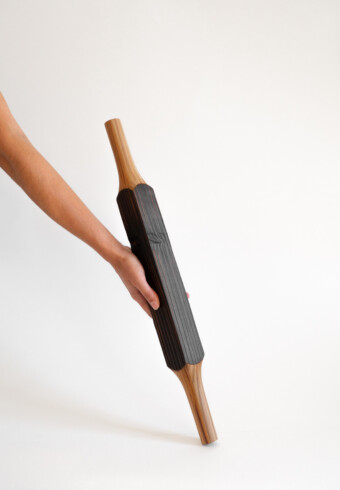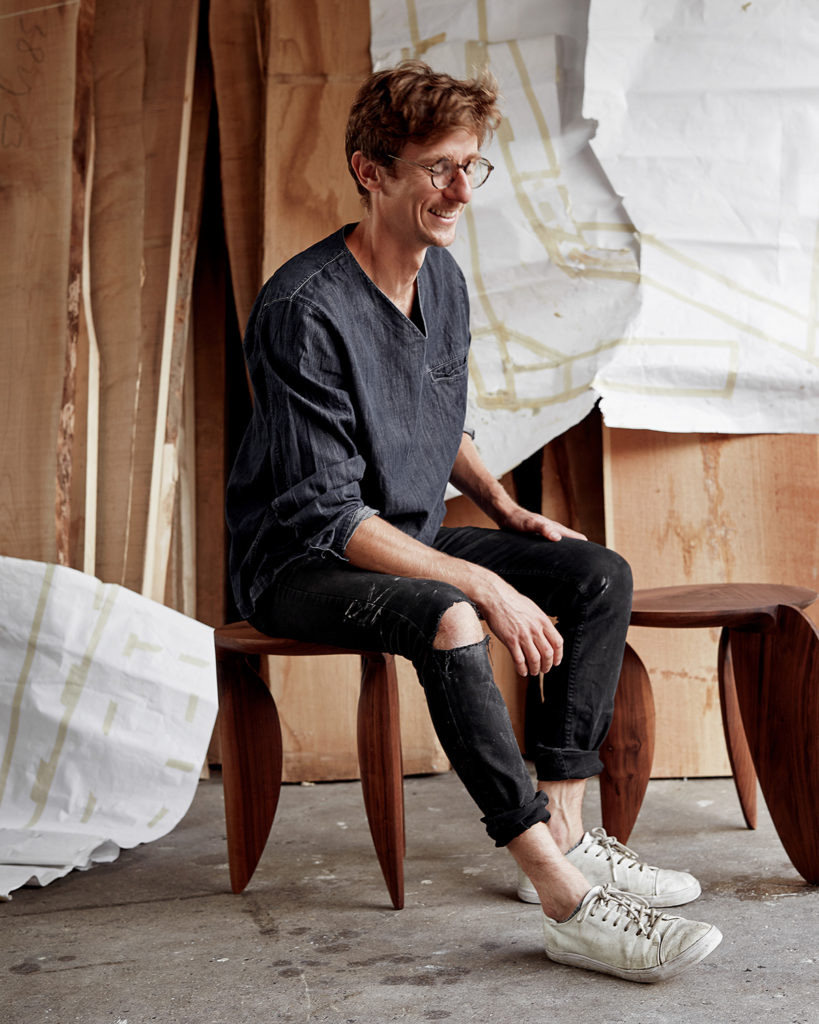
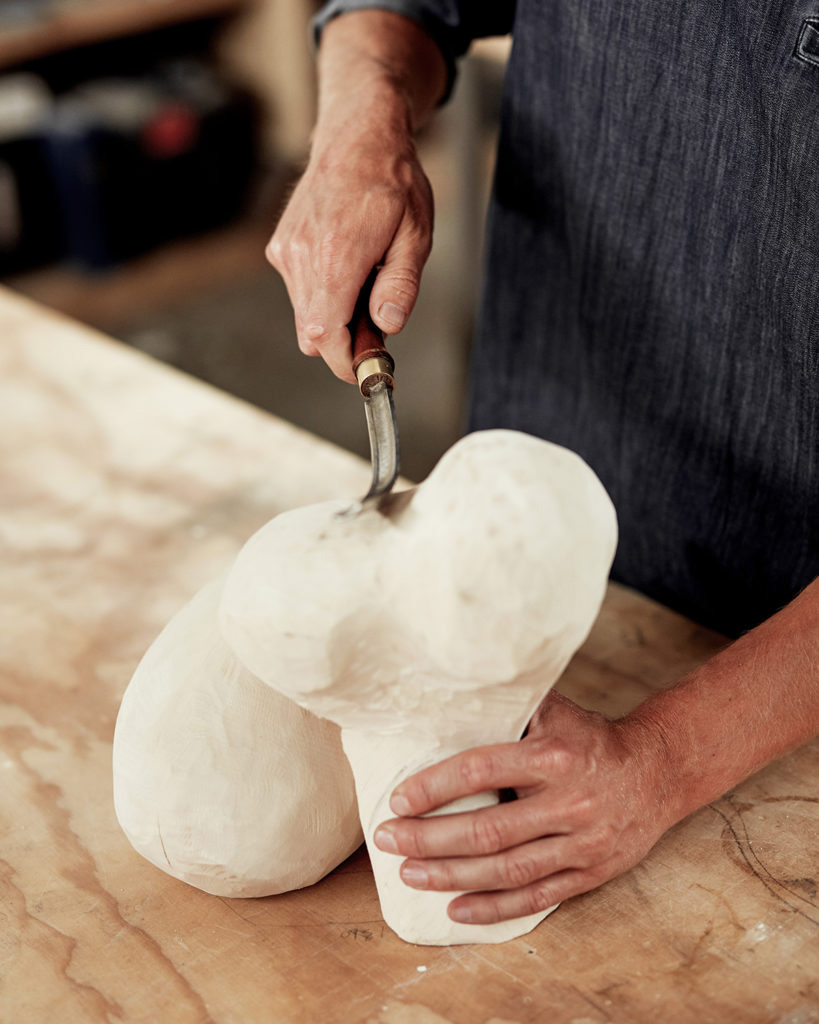
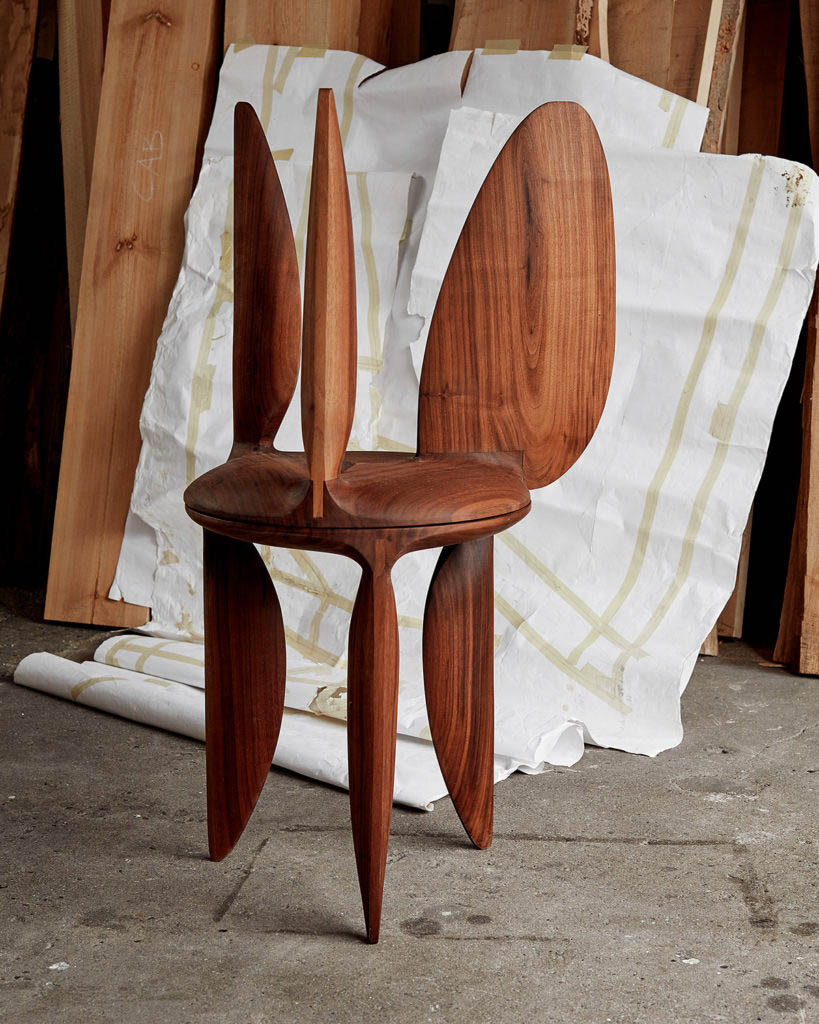
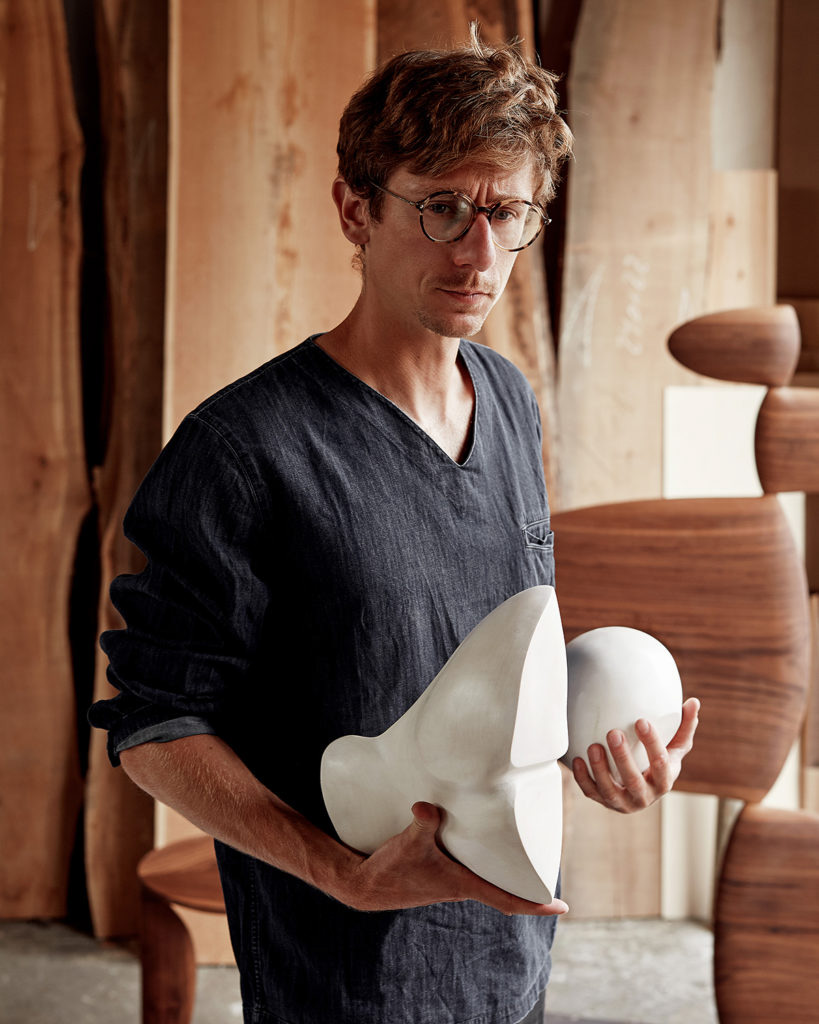
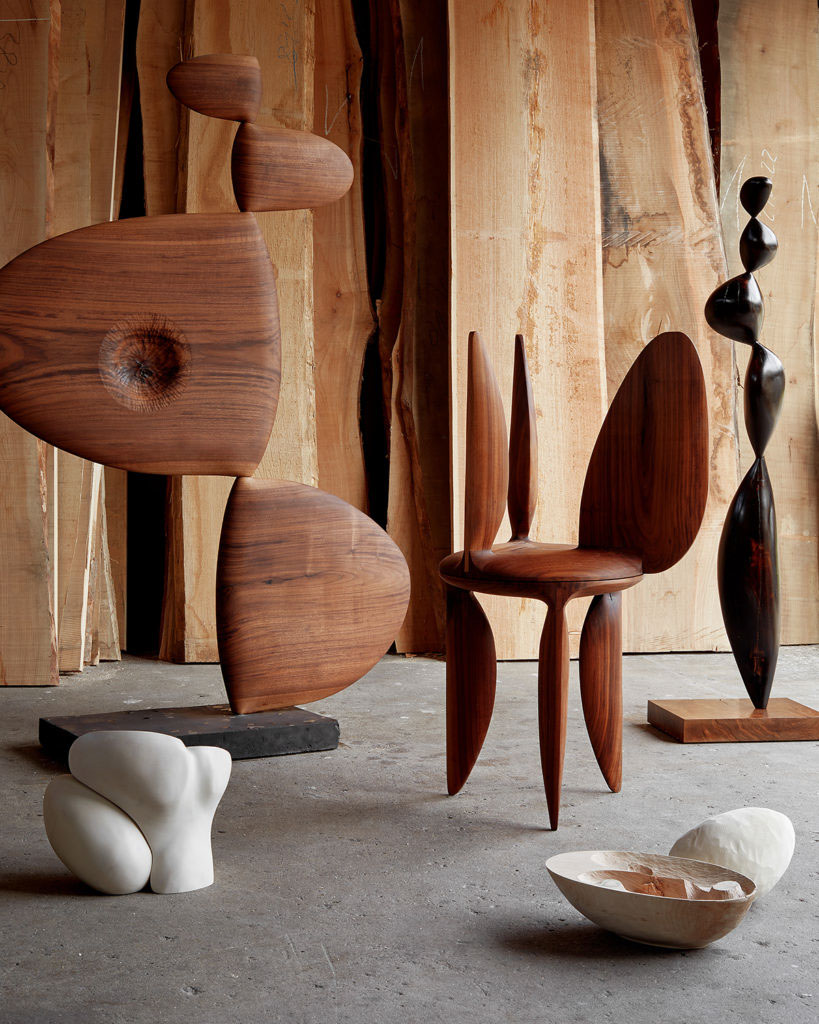
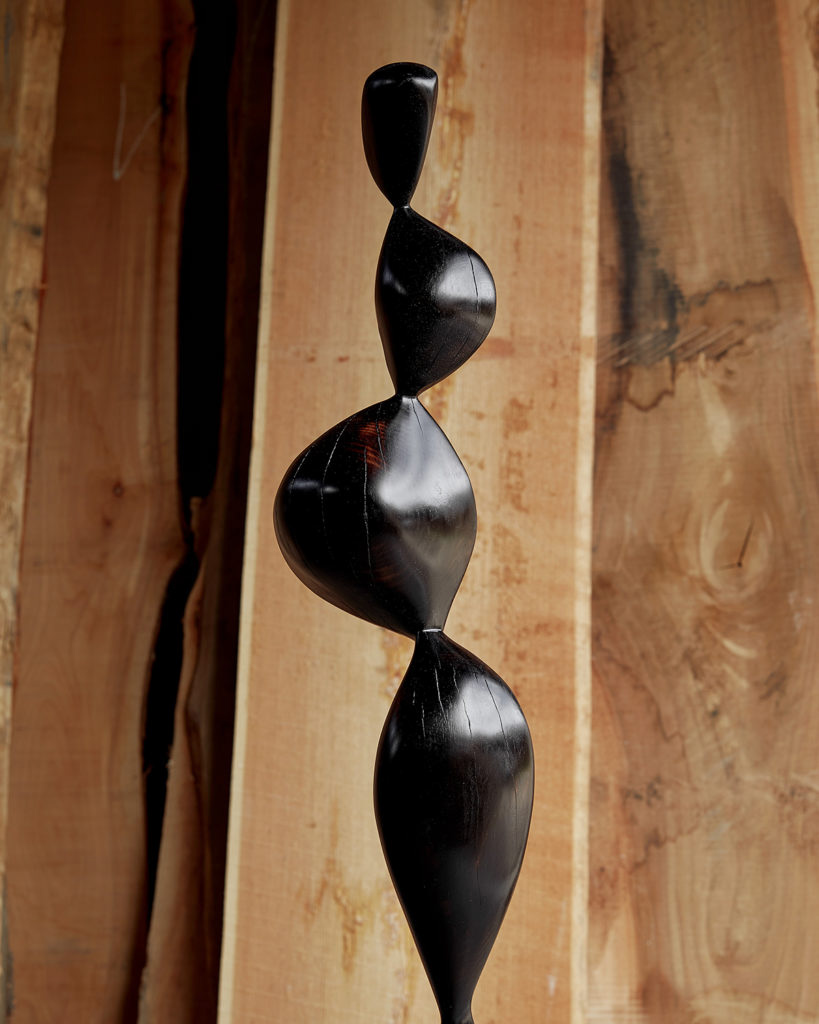
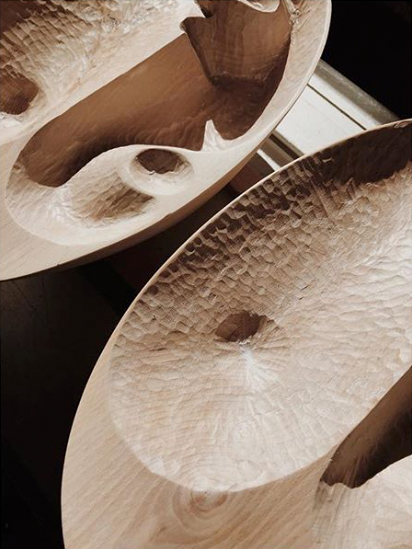
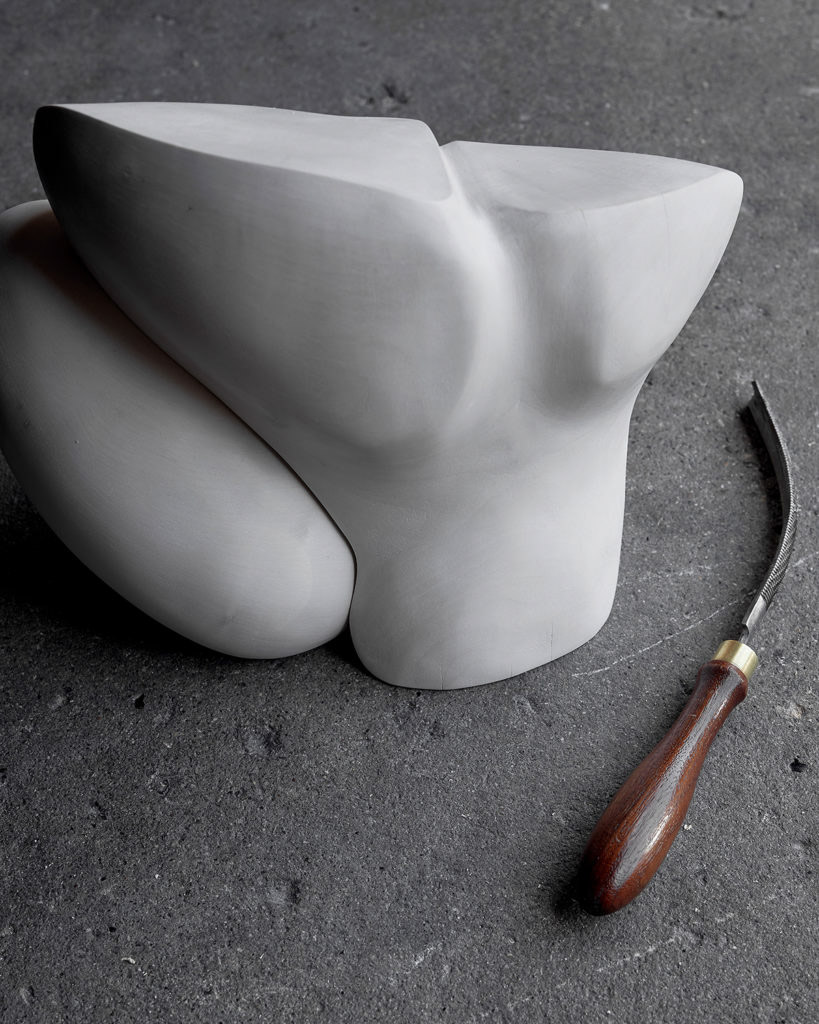
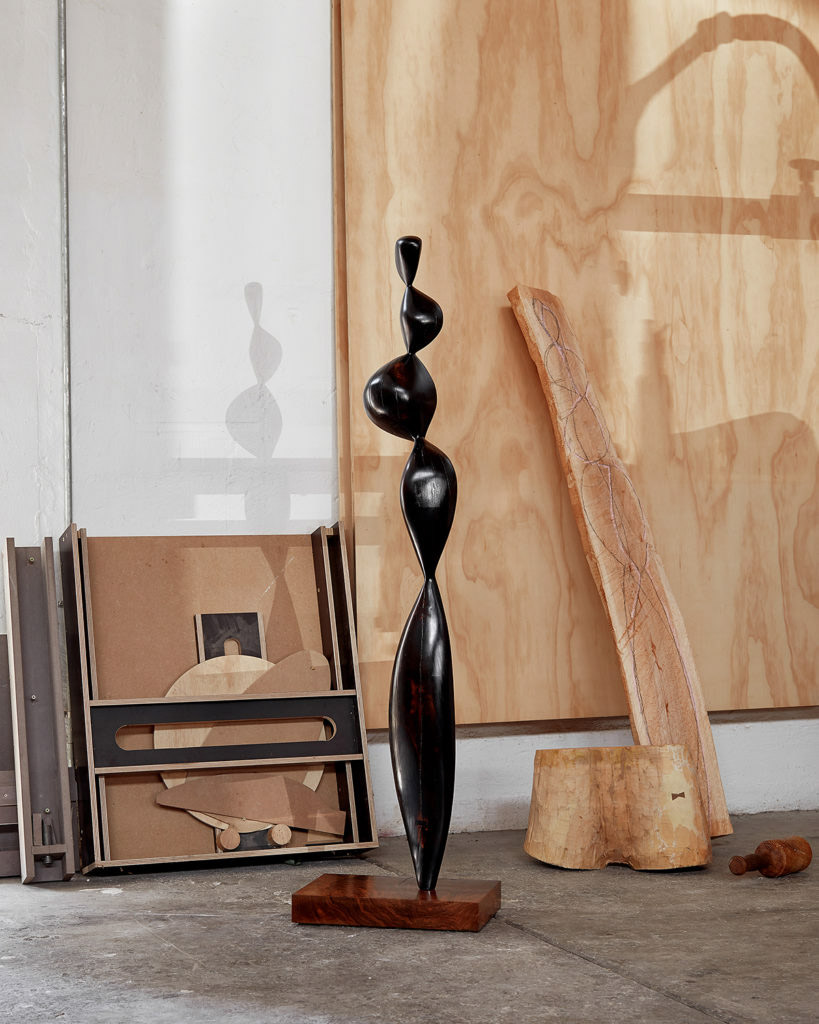
Nicholas Shurey

Nicholas seduced us with his global approach to wood. Versatile, he sculpts abstract pieces, designs furniture, collaborates with architects. Through this practice, he breaks down barriers in a very often segmented sector. Discovery.
How do you define you ? More like a designer, a sculptor ?
This is a question I sometimes ask myself and struggle to answer. Whilst I was educated as an architect and designer, my pieces are more than the outcome of a design process – it’s more of an emotional, meandering process which the word ‘designer’ fails to describe. To me it feels a strong assertion to call one’s work art, but I can live with ‘sculptor’.
I saw you worked before as an interior architect, at Space Copenhagen and Studio Toogood. What have you learned from these experiences? You still collaborate with architects, exposing your pieces at Norm Architects projects and making models for Nicolas Lee Architect. Is it important for your to conserve this link?
My years spent working for interior studios were really important in helping to inform my aesthetic sensibilities; the importance of knowing references, an appreciation of form and an understanding of materials. Perhaps more essential though, was learning that designing spaces and products is a much broader discipline than we tend to consider; in many senses it can be better described as ‘the curation of human experience’. Being able to create a sense of narrative within one’s designs and the art of narrating to describe this narrative are vital to this approach. The founders of both of these studios are incredible storytellers, and fantastic to learn from. Although I no longer work directly in architecture myself, I still feel inextricably connected with it. In the same way that a good story is the careful curation of words, a good space is the careful curation of details and objects – and so collaborating with architects is a natural extension of my job.
How did you come to woodworking ?
For as long as I can remember I’ve always enjoyed making things, and growing up I helped my parents work on renovation projects at our family home. These projects often involved woodwork so I have a certain familiarity with carpentry, but no formal training. Last spring I decided to leave my architecture job and spend a month in Switzerland working with a farmer-cum-sculptor. The days were spent helping on the farm, tending the sheep and crops, making hay and building greenhouses. During my breaks I drew sketches in the barn or orchard and in the evening I made raw models in clay or wood. It was incredibly liberating to start with a block of solid wood, and chip away to reveal the form hidden within it. I didn’t want to lose this sense of freedom when I arrived back in Copenhagen, so I bought some basic sculpture tools and have been using them ever since.
Do you have a special link to wood or are you attracted to other materials ?
I find myself attracted to natural materials far more than synthetic ones, although I do have a particular affinity to wood. I think it stems from my love of nature and being outdoors – some of my fondest childhood memories are set under trees or within forests, and the smell of freshly cut wood takes me right back. The process of taking a sawn log, with its rough, uneven surfaces, and slowly shaping, refining them until they are as smooth as polished stone is incredibly haptic and gratifying.
Do you have a wood in particular you like to work ?
At the moment I enjoy the contrast between the uniform, pale and almost buttery maple logs that come from the forests north of the city, and the rich hues and streaky grains of the walnut that I buy from a local timber merchant. Although they are much tougher to work with, I prefer hardwoods because of their richer, more varied grain patterns and ability to be sanded to a near-perfect smooth surface.
What’s your process ? Do you source the wood according to your ongoing project ?
My process always start with a long period of sketching thoughts down without necessarily knowing what I want to create. I work with both seasoned planks, and greenwood logs that I prepare and dry out myself. The logs typically vary a lot in shape and appearance, which means that ideas often have to be developed with the exact log in mind. For my bigger sculpture pieces and those which also function as furniture, I source seasoned planks that are more stable, easier to process and join precisely.
How do you define your work ? Some of your sculptures are very organic and poetic, when your walnut bowl is more familiar and playful.
I like to think that all of my work has a playful quality, although some pieces (such as the walnut bowl) are certainly cheekier than others. I suppose that the red thread between them is that they are all the product of a curiosity of form, or perhaps better described as a curiosity in to the suggestiveness of form. My experience of drawing architectural plans has instilled me with a deep appreciation of how the simplest gesture of a line or curve can have enormous nuance. I favour organic forms because there’s a satisfaction in drawing smooth, curves that flow into one another and even more satisfaction in sanding them smooth into physicality. I believe that good sculpture fills its viewers with a lust to touch it, and that we are intuitively drawn to objects that remind us of the body.
What inspires you ?
I like to think that all of my work has a playful quality, although some pieces (such as the walnut bowl) are certainly cheekier than others. I suppose that the red thread between them is that they are all the product of a curiosity of form, or perhaps better described as a curiosity in to the suggestiveness of form. My experience of drawing architectural plans has instilled me with a deep appreciation of how the simplest gesture of a line or curve can have enormous nuance. I favour organic forms because there’s a satisfaction in drawing smooth, curves that flow into one another and even more satisfaction in sanding them smooth into physicality. I believe that good sculpture fills its viewers with a lust to touch it, and that we are intuitively drawn to objects that remind us of the body.
How do you think crafts will evolve in the future ?
Craft has become a somewhat murky, misused word in recent years, but I think that there is clearly a movement back towards crafted objects that are well-designed, and whose manufacture require artisanal skill. The whole notion of craft is at odds with the way that we in developed societies consume things to excess. To me, craft is therefore one of the antidotes to capitalist consumerism. I hope that, given the very real existential threats that climate change, resource depletion and so on pose for all of us, our societies can transition back in part to a craft-based economy. Of course the problem is that crafted objects are labour-intensive to make, which has a considerable cost implication. It’s always difficult to more on fewer things that are of higher quality, ethically made, local, natural, and enduring. Having the skills to be able to repair things rather than simply discarding them.
Where can we find your work ? You recently shared a picture from the new Copenhagen space The Audo.
Yes, I do have several pieces on show at The Audo in Copenhagen, and will be adding more throughout the year. I always enjoy visiting other people’s studios, so you’re also welcome to drop by the workshop to see the process and chat over a cup of coffee.








- Photographer: Ed Gumuchian
- Location: Copenhagen, Denmark
- Website: https://nicholasshurey.com
Share
